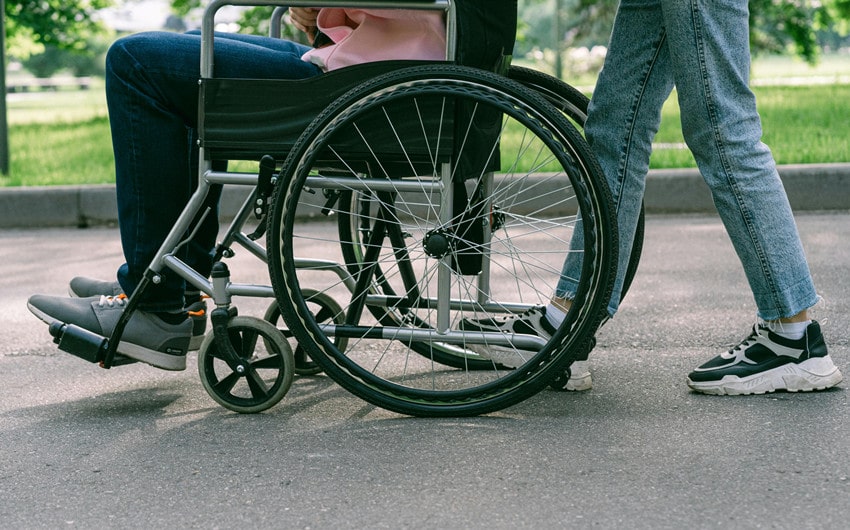Key Recovery Steps for the First 90 Days After an Accident
The first 90 days following an accident are often the most critical in shaping your physical, emotional, and financial recovery. Whether it’s a car crash, workplace injury, or slip-and-fall, your early actions can greatly impact your recovery and potential for compensation.
From getting prompt medical care and documenting injuries to managing insurance communications, each step matters. Delays or missteps can affect not only your health but also the strength of any future claim.
This guide outlines the essential recovery steps to take within the first three months after an accident. These steps can help you stay focused, organized, and prepared during a challenging time.
1. Manage Pain and Symptoms
Managing pain effectively during the first 90 days after an accident is essential for both physical recovery and emotional well-being. Uncontrolled pain can delay healing and diminish quality of life.
According to the Cleveland Clinic, your healthcare provider may recommend a combination of prescription and over-the-counter (OTC) medications. These may include NSAIDs like ibuprofen and acetaminophen, as well as topical analgesics such as lidocaine or capsaicin cream. Antiseizure medications like gabapentin and pregabalin are also commonly used for nerve-related pain.
In some cases, healthcare providers may recommend antidepressants such as SNRIs or tricyclics, muscle relaxers, corticosteroids, or opioids.
Non-pharmacological strategies are also valuable in managing symptoms. Ice or heat therapy, light stretching, meditation, and breathing exercises can support recovery without heavy reliance on medication. Additionally, prioritizing sleep through a comfortable sleep environment and consistent routines can further enhance your body’s ability to heal efficiently.
2. Prioritize Physical Rehabilitation and Therapy
Physical rehabilitation is paramount for long-term accident recovery. Your therapist will create a tailored exercise program to rebuild strength, restore mobility, and enhance coordination. Early, consistent participation prevents atrophy and stiffness.
Plans are individualized, starting with gentle range-of-motion or progressing to weight-bearing activities based on injury severity. Regular check-ins with your therapist are crucial for monitoring progress and ensuring correct exercise execution.
The cost of treatment, rehab, and therapy may be a reason to worry, but people who face injuries due to someone else’s negligence can seek compensation. In April, 2025, Fayetteville, Arkansas, witnessed two pedestrian crashes in one week. Injuries can be grave when a car hits a person in such circumstances.
Consulting a Fayetteville car accident lawyer should be the first step for the victim or their loved ones. They ensure enough compensation to cover the cost of treatment and long-term rehab.
Keith Law Group notes that victims can also claim compensation for pain and suffering and loss of income. A legal recourse sets you on the road to long-term recovery after an accident.
3. Support Daily Life with Professional Help
Returning home after an accident often presents unexpected daily challenges, from bathing to managing medications, particularly with mobility issues or persistent pain. At this stage, home care services can be incredibly beneficial. Trained caregivers assist with personal care, medications, wound care, and housekeeping, lightening the survivor’s load and reassuring families.
Such professionals are also adept at recognizing early signs of complications, prompting timely intervention. You can seek personalized care options available during recovery.
Engaging a home care provider is often key to a smoother, safer, and more comfortable recovery process during those critical first 90 days.
4. Monitor Emotional and Mental Health
The psychological toll of an accident can be profound. Feelings of anxiety, depression, frustration, or PTSD are common as survivors navigate pain, uncertainty, and life changes. As the Mayo Clinic notes, while initial PTSD-like symptoms are normal, most people don’t develop full PTSD, especially with timely support.
Early intervention is crucial. Counseling or therapy helps individuals process experiences and develop coping strategies. Family members should promote open dialogue about emotions and watch for distress signs like withdrawal or mood swings. Healthcare providers can recommend resources, support groups, or mental health professionals.
Addressing emotional well-being isn’t a luxury. It’s a vital component of recovery that can accelerate healing, preventing unhealthy coping mechanisms like substance misuse.
5. Track Recovery Milestones and Adjust Goals
Accident recovery is rarely linear, so setting realistic, achievable goals is crucial for maintaining motivation. Work with your healthcare team to establish both short-term and long-term milestones, like walking a specific distance, reducing pain medication, or returning to work. Regularly review your progress, celebrating successes and adjusting your plan as needed.
Don’t be discouraged by setbacks; healing often involves ups and downs. Stay patient and flexible. Every small step forward is a victory. Keeping a recovery journal or checklist can help you stay organized and focused on your journey.
Even in cases of severe injury, progress, however gradual, is possible. The importance of patience and persistence is echoed in real-life stories. In 2013, a year after retiring from F1, legendary driver Michael Schumacher suffered a serious brain injury in a skiing accident.
He has lived privately since, surrounded by close family and medical staff. Remarkably, he recently made his first public appearance in 11 years at his daughter Gina-Marie’s wedding in Mallorca. This exemplifies that even significant challenges can yield progress over time.
FAQs
How do I know if I need home care services after an accident?
You may need home care services if you struggle with daily tasks like bathing, dressing, or managing medications after an accident. Signs include limited mobility, ongoing pain, or a need for wound care. A doctor or discharge planner can assess your condition and recommend appropriate support.
Which injury is permanent?
Permanent injuries are those that cause lasting or irreversible damage. Examples include spinal cord injuries leading to paralysis, traumatic brain injuries with cognitive impairment, and limb amputations. While treatment may improve quality of life, these conditions typically result in long-term or lifelong changes that cannot be fully reversed.
Which injury takes the longest to heal?
Injuries involving bones, nerves, or soft tissues, like spinal cord injuries, traumatic brain injuries, or severe fractures, often take the longest to heal. Recovery can span months or even years, depending on severity and treatment. Healing time also varies by age, overall health, and adherence to rehabilitation or medical guidance.
The first 90 days after an accident are a period of adjustment, challenge, and opportunity. By following the steps outlined in this article, you lay a strong foundation for a successful recovery. Each step plays a vital role, and together, they form a holistic approach to restoring independence and quality of life.
You don’t have to face this journey alone; lean on your healthcare team, loved ones, and professional caregivers for support. With the right resources, steady patience, and determination, you can overcome challenges and continue progressing with confidence.







